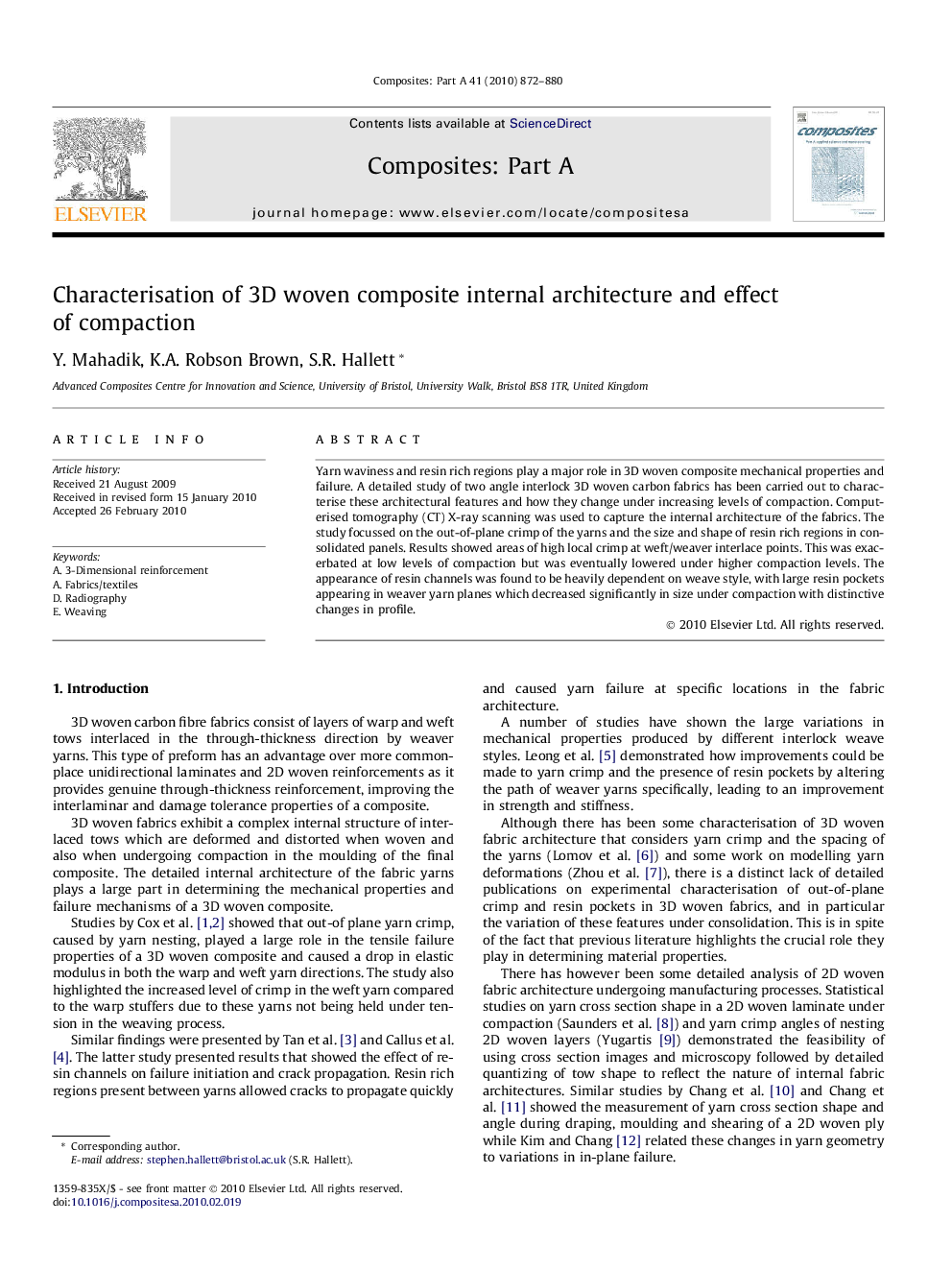| Article ID | Journal | Published Year | Pages | File Type |
|---|---|---|---|---|
| 1466889 | Composites Part A: Applied Science and Manufacturing | 2010 | 9 Pages |
Yarn waviness and resin rich regions play a major role in 3D woven composite mechanical properties and failure. A detailed study of two angle interlock 3D woven carbon fabrics has been carried out to characterise these architectural features and how they change under increasing levels of compaction. Computerised tomography (CT) X-ray scanning was used to capture the internal architecture of the fabrics. The study focussed on the out-of-plane crimp of the yarns and the size and shape of resin rich regions in consolidated panels. Results showed areas of high local crimp at weft/weaver interlace points. This was exacerbated at low levels of compaction but was eventually lowered under higher compaction levels. The appearance of resin channels was found to be heavily dependent on weave style, with large resin pockets appearing in weaver yarn planes which decreased significantly in size under compaction with distinctive changes in profile.
